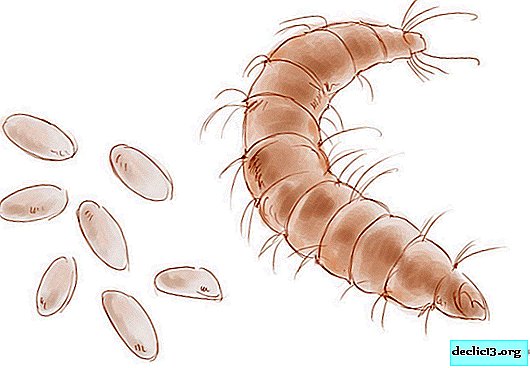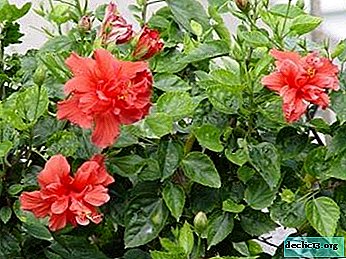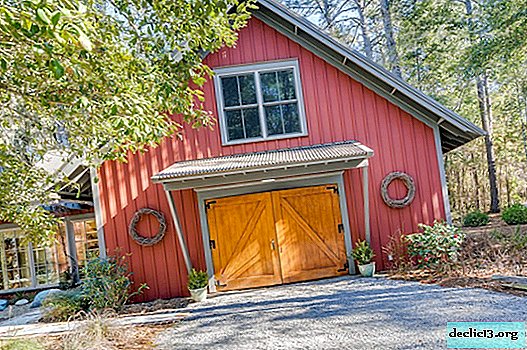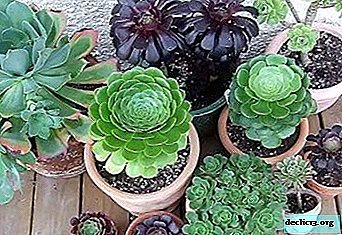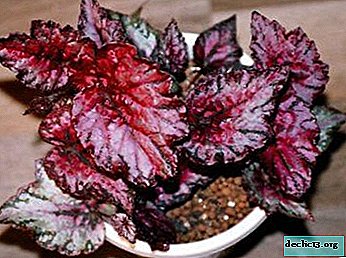A variety of species and varieties of room and garden geraniums: names and photos of beautiful flowers
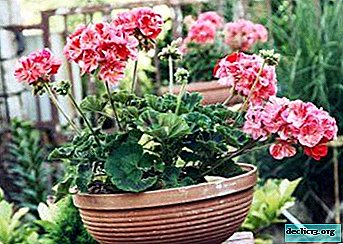
Geranium is called a perennial plant, which is often grown at home. Depending on the variety, it is a shrub or herbaceous plant. Botanists note that there are more than 250 varieties of geraniums.
In the wild, the plant "lives" in the south of the African continent. In our latitudes, it is a houseplant, but there are also wild garden varieties with less decorative qualities. The article presents the varieties of a flower with photographs, as well as the rules for caring for a beautiful plant.
Garden plant
Garden geranium, unlike a distant thermophilic relative, lives perfectly in open ground, has long been popular around the world. The birthplace of many garden varieties is England. Modest beauty geranium fully meets the qualities required to create garden landscapes.
The garden variety of the plant is appreciated not only for the beauty of flowering, but for habitus - geranium forms dense compact bushes with beautiful leaves that retain their own decorativeness until winter, can grow with carpet, have different sizes and colors of leaves and flowers. In a variety of colors there is not only orange and yellow. The size of the flowers ranges from 2.5-4.5 cm.
Interesting fact! There are winter-hardy hybrids suitable for the Midland of our country.Varieties of indoor flower: names and photos
In home breeding, zonal geranium, which is also called a kalachik, is more common. It is distinguished by concentric dark circles on the leaves. The flower reaches 30-60 cm in height, sometimes as much as 1 meter. Terry flowers or simple, bright colors, collected in umbrella-like inflorescences. But there are many other varieties of this bright plant.
Thyroid or ivy

This is an ampelous variety for hanging pots with brittle shoots up to 1 m in length, which hang outward. Inflorescences are racemose, simple. Terry flowers or semi-double, the palette is diverse: from white to dark blue. The size of flowers is up to 5 cm. It blooms from the beginning of summer until the end of autumn (read about caring for ivy geranium here).
Zone Pelargonium

This variety of room geranium is most popular, as mentioned earlier. All types of varieties are quite persistent, bloom luxuriantly. The leaves of the flower are pubescent, they emit a special smell when touched. Zone geranium flowers can be very different:
- terry and semi-double;
- ordinary;
- tulip;
- pinkish;
- stellate, etc.
Royal or English large-flowered

It is presented by the most different grades, forms and shades. Sometimes there are even specimens with variegated foliage. The plant reaches a height of up to 0.5 m. Royal geranium has specks or stripes of dark color along the veins on the lower petals.
Its rough and jagged leaves are very reminiscent of maple. This is the most whimsical variety of all pelargoniums, but its flowering is much less and only after 2 years of growth.
Scented

Such flowers with aromas of various products: almonds, ginger, mint, lemon, pineapple, coconut, needles. Smells appear if you touch the leaves. This is truly a miracle used to make healing geranium oil.
Flowers of such plants are small, purple or pink. Bright foliage of fragrant geranium has 5-7 parts, looks terry.
Read about how to care for fragrant geraniums here, and from this article you will learn about the use of plants in folk medicine.
Angels

These geraniums resemble pansies that bloom in drooping hats of inflorescences. They are compact bushes up to 30 cm high with constant pruning. Angels possess grace of form, magnificent branching, are unpretentious. Flowering lasts all summer. Flowers are white, pink, purple, lilac.
Unique

These are hybrids obtained by combining brilliant and royal geraniums. Possess dissected leaves and aroma of spice. The flowers are distinguished by their unique beauty, resembling the inflorescences of the royal pelargonium, but somewhat smaller in size.
The middle is white, and the color of the leaves is red. Varieties of white and pink are few in number. Some species have dark spots and streaks.
Succulents

This variety of geranium is represented by 10 varieties, which can be with and without thorns. Curious due to decoratively curved stems, similar to small baobabs. They are used to form bonsai. Among all the varieties, there are fleshy, humpback, cortusolate, fluffy, angular and thick-stemmed geraniums.
Lemon Pelargonium

This variety has become popular because of its pubescent, dissected, bright green leaves and complex shape. The bush is quite high, capable of reaching 1.5 meters. When you touch the leaves, a very powerful lemon aroma is produced.
General care rules
Geranium is one of the most popular flowers for the home, which does not require special efforts and skills for growing. But there are some features, and it is important to know:
- in winter, geraniums need coolness, but not less than +10 degrees;
- the flower loves the sun, therefore it is better to place it on the south side;
- geranium blooms in any season, but this will require adequate nutrition and lighting;
- to improve branching, you will have to pinch the shoots;
- wilted flowers should be removed;
- almost all species need regular pruning.
So, how to care for the plant.
Soil and watering
Soil is needed moderately fertile, so that there are more flowers on the bush, but less greenery. A drainage layer is also required. Watering should be plentiful, as the land dries, and in winter it is minimal.
The plant does not need spraying, because Dry, fresh air will do. Light is needed bright, even direct rays of the sun are allowed. But in strong heat the plant is worth shading. In winter, the temperature should be at +15.
Fertilizer
It is necessary to feed geraniums every 2 weeks, the process begins from the end of March and lasts until mid-November. Liquid fertilizers are suitable.
A useful supplement is a solution based on water and iodine. For this, 1 drop of iodine is added to 1 liter of water. Carefully pour the mixture over the walls of the pot (50 ml). It does not require a large volume, so as not to burn the roots. This top dressing gives abundant and long flowering.
Fresh organics as fertilizers do not fit geraniums.Transfer
Geraniums do not like transplants, and they are not very necessary for her. If the roots are already peeping out of the drain, you can expose the flower to this procedure. Produce transplants, as well as planting, in the early spring, when the growing season begins. The pot is taken 2 cm more than the previous one.
Visual video about a geranium transplant:
Pruning
In autumn you need to cut the shoots. Leave the stem with 6-7 leaves. Shoots need to be removed those that grow not from the roots, but from the axils of the leaves.
If during the winter the flower has grown again, then in the spring (end of February - beginning of March), it is cut again, leaving several buds on the stem. Cut branches can be used as cuttings.
In the future, to improve flowering and dense bush, shoots should be pinched after 4-5 leaves. Between December and January, geraniums should not be pruned.
General features of reproduction
Seed method
This is an easy way. Seeds should be sown in moist loose soil (sand (1 part), peat (1 part) and turf (2 parts). Top them with a layer of soil or sand (2-2.5 cm). Then sprinkle with water.
Planting is covered with glass, the soil is regularly moistened. Germination requires 18-22 degrees. Glass is removed after emergence. Seedlings are placed in the light, but the temperature should already be 16-20 degrees. After 1.5-2 months after the appearance of 2-3 true leaves, you can transplant the plants into pots. And pinch after the appearance of 5-6 sheets.
Cuttings
It is better to cut the plant in spring. The stalk should be 5-7 cm in length and possess 2-3 leaves. A fresh twig should be dried for 24 hours, then sprinkled with a crushed charcoal slice and planted in a pot with loose earth. After the emergence of the roots of the cuttings can be transplanted to a permanent place.
Detailed video on the propagation of geraniums:
Conclusion
In addition to decorative qualities, geranium is different and healing. Leaves of some varieties are even used in food. And the extract from them is used to aromatize the room, in aromatherapy. Geranium essential oil is one of the most healing. Helps with respiratory and colds.




